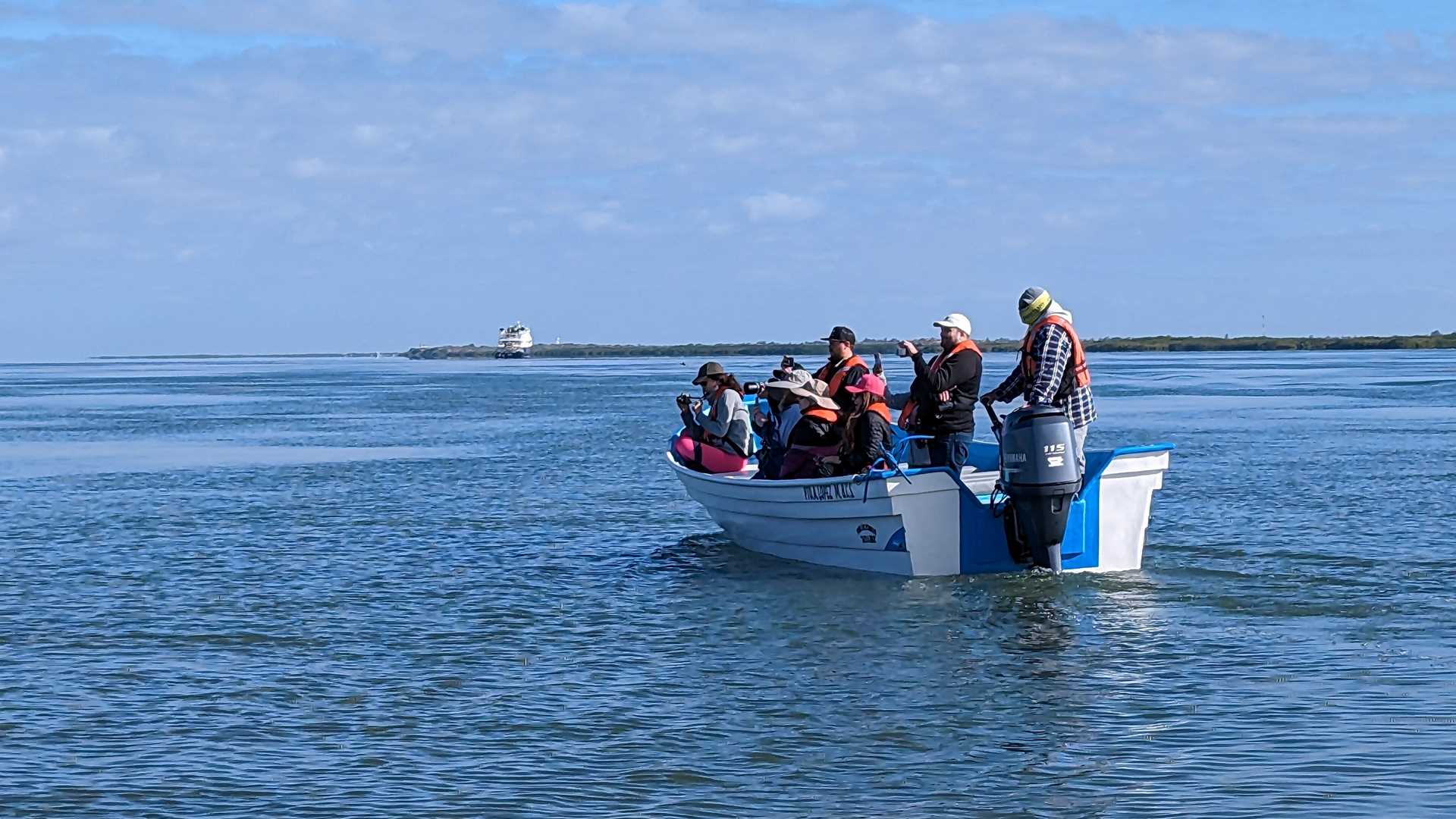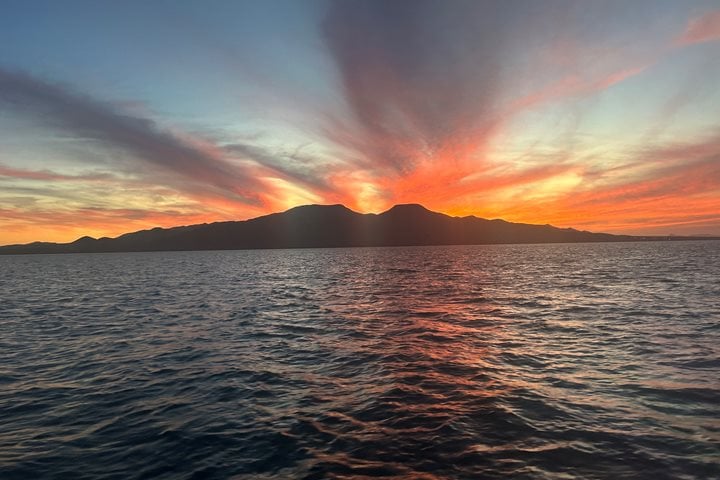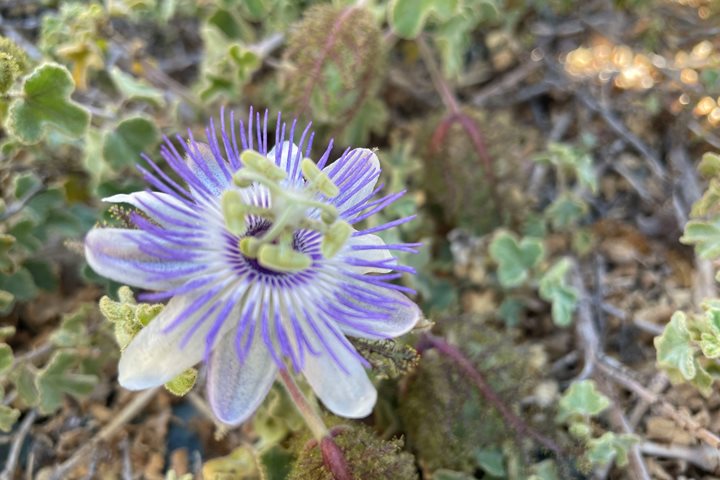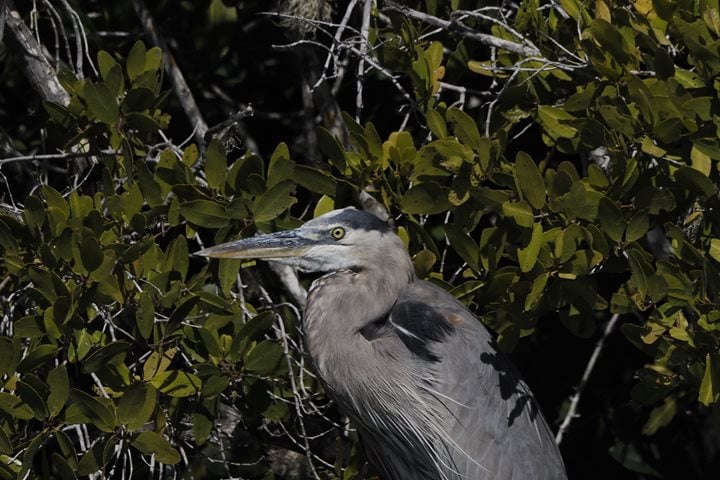The sunrise found our group’s birders in the same place they have been all week: gathered tightly on the bow and searching to expand our impressive list of species. Straight after breakfast, we loaded into the pangas to search for large mammals. It only took a few minutes to spot a new mother and what our drivers guessed was a three-week-old calf. The young, shiny calf swam alongside its mother, arching its shiny, dark grey back as mom surfaced and showed off her mottled skin. These magical encounters carried with them a spiritual feeling that was shared amongst all those on the water.
The visit with the whales lasted for over two hours before we met in the dining room for a raucous lunch filled with retellings of the morning’s events. Well, if it was so good, we might as well do it again, right? After dessert and some time to settle, we loaded the boats again to see if our luck would hold out. As fate would have it, we spotted a total of four pairs of mothers and calves in the lagoon. We cheered as the great whales rose close to the boats with the newborns pushing their faces up onto their mothers’ backs.
We could not have hoped for a more beautiful evening for a bonfire on the beach. Chef Eric Seabury and his staff produced quite the delicious buffet a mere fifty yards from the ocean. While the food was cooking, kids jumped off the dunes, and naturalists tracked the various insects and animals that wandered through the area. Hours later, the beach was still filled with laughter. As the fire was extinguished, we made our way back to the boat. The lounge was filled late into the night, as most guests remained awake to share in the waning moments of a perfect day on National Geographic Sea Bird. It was a late night for everyone on board, but one we will never forget.







